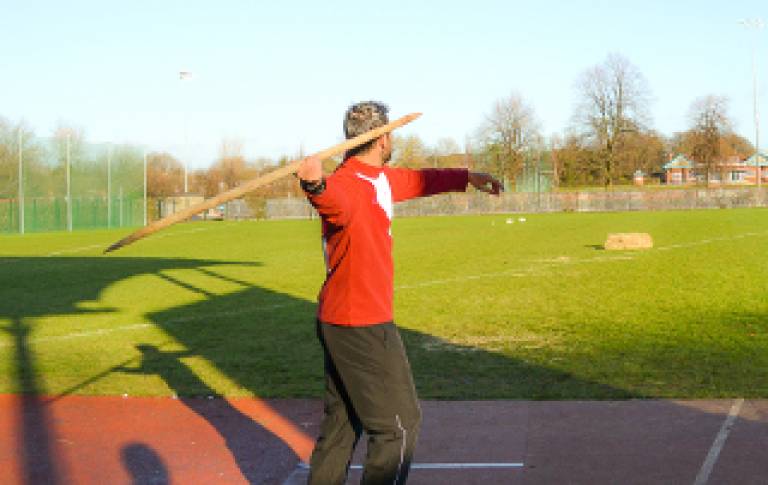Neanderthals could kill from a distance
25 January 2019
According to a new study involving Annemieke Milks and Matthew Pope from the UCL Institute of Archaeology, Neanderthals made weapons that were capable of killing at a distance.

The study, published in Scientific Reports, examined the performance of replicas of the 300,000 year old Schöningen spears to identify whether javelin throwers could use them to hit a target at a distance. Owen O’Donnell, an alumnus of the Institute, made the spear replicas by hand using metal tools. They were crafted from Norwegian spruce trees grown in Kent.
The Schöningen spears - the oldest known weapons reported in archaeological records - are a set of ten wooden throwing spears from the Palaeolithic that were excavated in an open-cast lignite mine in Schöningen, Germany, between 1994 and 1999, together with approximately 16,000 animal bones.
The study was conducted with six javelin athletes who were recruited to test whether the spears could be used to hit a target at a distance. Javelin athletes were chosen for the study because they had the skill to throw at high velocity, matching the capability of a Neanderthal hunter.
The javelin athletes demonstrated that the target could be hit at up to 20 metres, and with significant impact which would translate into a kill against prey. This is double the distance that scientists previously thought the spears could be thrown, demonstrating that Neanderthals had the technological capabilities to hunt at a distance as well as at close range.
According to Annemieke who led the study:
- "This study is important because it adds to a growing body of evidence that Neanderthals were technologically savvy and had the ability to hunt big game through a variety of hunting strategies. It shows that distance hunting was likely within their repertoire and that behavioural flexibility closely mirrors that of our own species. This is yet further evidence narrowing the gap between Neanderthals and modern humans.”
 Close
Close

